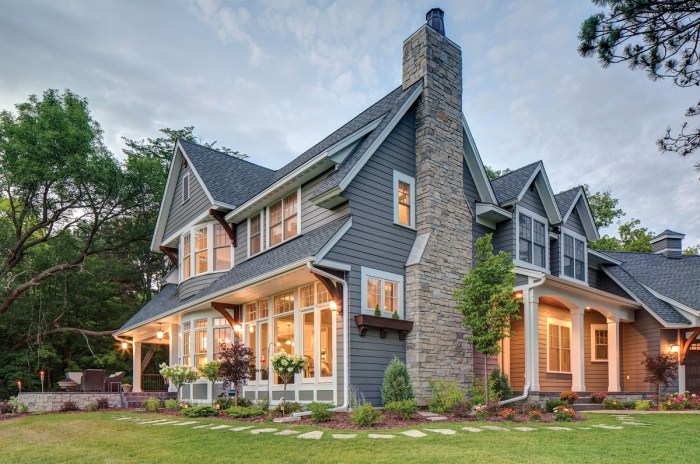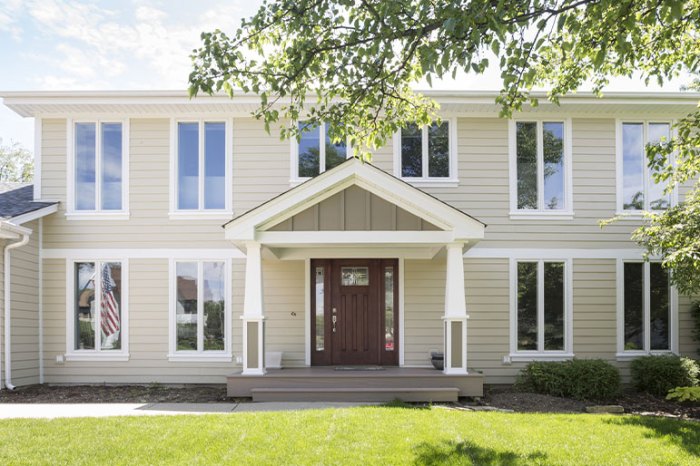Exploring House Siding Options Cost: A Comprehensive Guide
Delving into the realm of house siding options cost, this guide invites readers into a world of information and insight. From materials to budget-friendly choices, embark on a journey filled with valuable knowledge and tips for making the right decision for your home.
When it comes to siding options cost, understanding the various materials and factors at play is crucial. Let's explore the key aspects that can influence your choices and budget.
House Siding Options
When it comes to house siding options, there are several materials available in the market to choose from. Each material comes with its own cost, durability, maintenance requirements, and color options. Let's take a look at some popular siding materials:
Vinyl Siding
Vinyl siding is one of the most cost-effective options available. It is durable, low maintenance, and comes in a wide range of colors, making it a popular choice for many homeowners.
Wood Siding
Wood siding provides a classic and natural look to a home. While it may require more maintenance compared to vinyl, it offers a unique aesthetic appeal that some homeowners prefer. However, wood siding can be more expensive upfront and may require staining or painting over time.
Fiber Cement Siding
Fiber cement siding is known for its durability and resistance to elements like moisture, fire, and insects. While it may have a higher initial cost, it is a long-lasting option that requires minimal maintenance. Fiber cement siding also comes in a variety of colors and styles to suit different preferences.
Metal Siding
Metal siding, such as aluminum or steel, is another durable option that can withstand harsh weather conditions. It is relatively low maintenance and can be a cost-effective choice in the long run. Metal siding is available in a range of colors and finishes to complement any home style.
Cost Factors to Consider
![How Much Does It Cost to Replace Siding? [2025 Data] | Angi How Much Does It Cost to Replace Siding? [2025 Data] | Angi](https://smart.gemskul.com/wp-content/uploads/2025/06/siding-replacement-5fd8865248002-1.png)
When it comes to house siding installation, there are several key factors that can influence the overall cost. Understanding these factors can help you make informed decisions and potentially save money on your project.
Size and Layout of the House
The size and layout of your house play a significant role in determining the cost of siding installation. Larger homes will require more materials, which can drive up the overall cost. Additionally, houses with complex layouts or multiple stories may require more labor and expertise, leading to higher installation costs.
Additional Costs
In addition to the cost of materials, there are several other expenses to consider when budgeting for house siding installation. Labor costs can vary depending on the complexity of the project and the expertise of the workers. Permits may also be required, adding to the overall cost.
Furthermore, investing in insulation can increase upfront costs but lead to long-term energy savings.
Tips for Cost Reduction
- Get multiple quotes from different contractors to compare prices and services.
- Consider using durable, low-maintenance materials that may have a higher upfront cost but can save money in the long run.
- Opt for standard colors and finishes to avoid customization fees.
- Research and take advantage of any available rebates or incentives for energy-efficient siding options.
Budget-Friendly Siding Options
When looking for budget-friendly siding options, there are several materials that can offer both affordability and durability. These options can help homeowners save on upfront costs while still providing long-term protection for their homes.
Vinyl Siding
Vinyl siding is a popular choice for budget-conscious homeowners due to its low cost and minimal maintenance requirements. While the upfront costs may be lower compared to other materials, it is important to consider the long-term savings, as vinyl siding can last for several decades with proper care.
Fiber Cement Siding
Fiber cement siding is another cost-effective option that provides a similar look to wood siding without the high price tag. While the initial investment may be higher than vinyl siding, fiber cement siding is known for its durability and resistance to rot, pests, and fire, making it a long-term cost-effective choice.
Negotiating Prices with Contractors
When working with contractors to install siding, it is important to negotiate prices to ensure cost-effective installations. Homeowners can gather multiple quotes from different contractors and compare the costs to choose the most affordable option. Additionally, discussing the scope of work and materials with contractors can help in negotiating lower prices.
DIY Installation of Budget-Friendly Siding
For those homeowners who are handy and looking to save on labor costs, DIY installation of budget-friendly siding materials can be a viable option. However, it is important to have the necessary skills and tools to ensure a proper installation.
Many manufacturers provide detailed instructions for DIY installation of siding materials, making it accessible for homeowners looking to tackle the project themselves.
Return on Investment (ROI)

When it comes to choosing the right house siding material, it's essential to consider the impact it can have on the home's resale value. The choice you make can significantly affect the return on investment (ROI) you get when you decide to sell your home in the future.
Average ROI of Different Siding Options
- Vinyl Siding: On average, homeowners can expect a ROI of around 75% when installing vinyl siding. It is a popular and cost-effective option that offers a good return on investment.
- Fiber Cement Siding: Fiber cement siding typically provides a ROI of approximately 84%. While it has a higher upfront cost compared to vinyl, its durability and low maintenance requirements make it an attractive option for many homeowners.
- Wood Siding: Wood siding can offer a ROI of about 77%. It provides a natural and timeless look, but it requires more maintenance compared to other siding materials.
- Brick Siding: Brick siding is known for its durability and can yield a ROI of around 87%. While it may have a higher initial cost, its longevity and classic appeal can add value to your home.
Importance of Balancing Upfront Costs with Long-Term Benefits
It's crucial to strike a balance between the upfront costs of siding installation and the long-term benefits it can provide. While some materials may have a higher initial investment, they can offer better durability, energy efficiency, and aesthetic appeal, ultimately increasing the resale value of your home.
Choosing Siding Materials with High ROI
- Consider the climate and weather conditions in your area when selecting siding materials. Materials that can withstand harsh weather and require minimal maintenance tend to offer a higher ROI.
- Look for siding options that are energy-efficient, as they can help reduce utility costs and increase the overall value of your home.
- Consult with a reputable contractor or real estate agent to get advice on which siding materials are popular and in-demand in your local housing market. This can help maximize the ROI of your siding investment.
Conclusion

In conclusion, navigating the realm of house siding options cost involves balancing quality, budget, and long-term benefits. By considering the factors discussed, you can make informed decisions that enhance both the aesthetic appeal and value of your home.
FAQ
What are the most budget-friendly house siding options?
Some affordable siding materials for budget-conscious homeowners include vinyl and engineered wood. These options offer a good balance of cost and durability.
How can I reduce the cost of house siding installation?
You can reduce costs by opting for DIY installation, comparing quotes from multiple contractors, and choosing materials that require less maintenance over time.
Which siding material offers the best return on investment?
Fiber cement siding is known for providing a high ROI due to its durability and minimal maintenance requirements, making it a popular choice among homeowners.